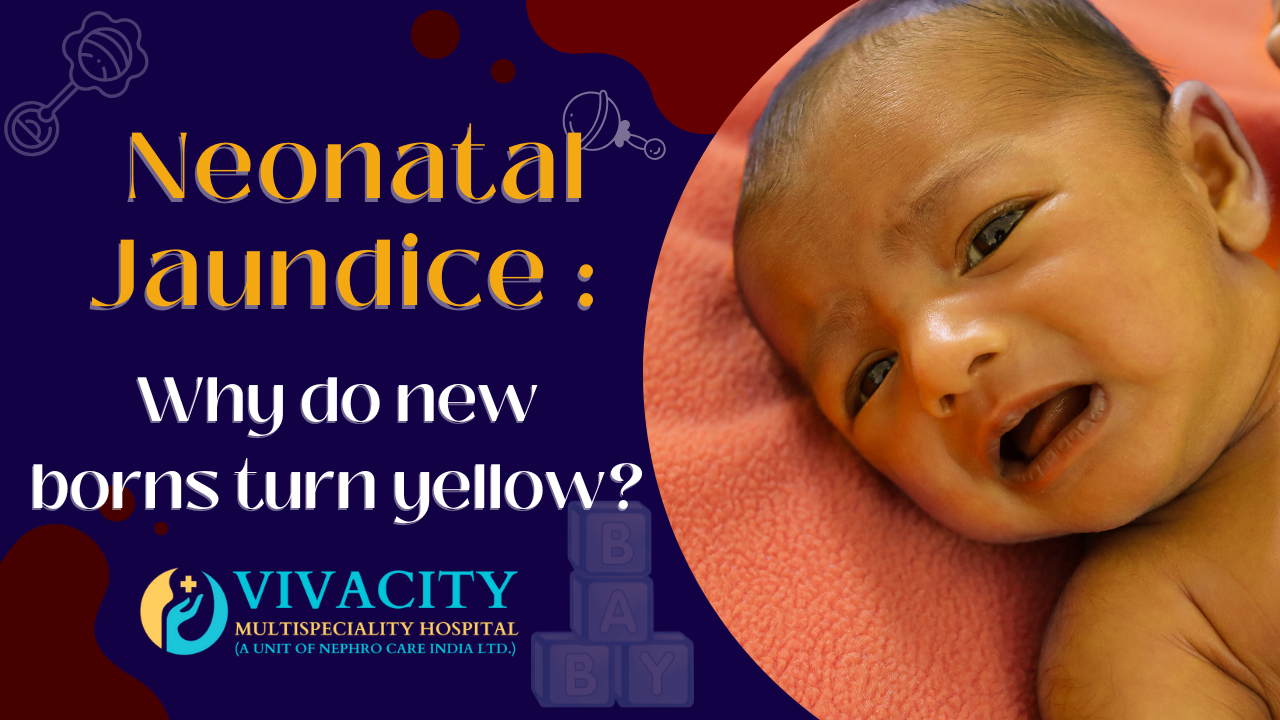
When Priya and Rahul welcomed their first child, they were overjoyed. But shortly after birth, their excitement turned to worry when doctors noticed a yellow tint in their baby’s skin and eyes. Diagnosed with neonatal jaundice, their newborn was quickly moved to the Neonatal Intensive Care Unit (NICU) for monitoring and treatment. Seeing their tiny baby under special lights in the NICU was overwhelming and heartbreaking. Priya and Rahul felt helpless and anxious, wondering if everything would be okay. However, as they learned more, they discovered that neonatal jaundice is common and usually temporary, affecting many newborns within the first few days of life.

In this blog, we’ll explore what causes neonatal jaundice, how it’s treated, and what signs parents should look for to help them feel prepared and reassured during those early days.
Neonatal jaundice is a condition where a newborn’s skin and eyes take on a yellow tint due to elevated levels of bilirubin, a yellow pigment produced during the breakdown of red blood cells. Normally, the liver processes bilirubin and then eliminates it from the body. However, newborns’ livers are still developing, which can lead to a temporary buildup of bilirubin in the bloodstream.
In most cases, neonatal jaundice is mild and resolves naturally. Nevertheless, understanding the condition and recognizing when to seek medical advice can provide parents with reassurance (American Academy of Pediatrics, 2021).

In the womb, babies have a higher concentration of red blood cells, which helps them obtain adequate oxygen. After birth, these extra red blood cells are broken down, releasing bilirubin. Newborns’ immature livers may require additional time to process bilirubin, causing it to temporarily accumulate in the bloodstream and lead to jaundice.
Before leaving the hospital, doctors examine newborns for jaundice symptoms. If jaundice is suspected, a skin or blood test may be performed to measure bilirubin levels. Parents should monitor signs of jaundice at home, focusing on yellowing on the chest, legs, or the whites of the eyes. (American Academy of Pediatrics, 2021).
Most cases of neonatal jaundice resolve naturally as the baby’s liver matures. If bilirubin levels are high, doctors may suggest the following treatments:
Although neonatal jaundice is usually harmless, parents should consult a healthcare provider if they notice:
For assistance with neonatal care, feel free to reach out here:
Neonatal jaundice, though initially concerning, is often a short-lived phase in a newborn’s development. By understanding the condition and keeping an eye out for specific symptoms, parents can feel more confident in managing this common issue. And remember, healthcare providers are always available to help. A little knowledge and guidance can go a long way toward easing parents’ minds in those early days.